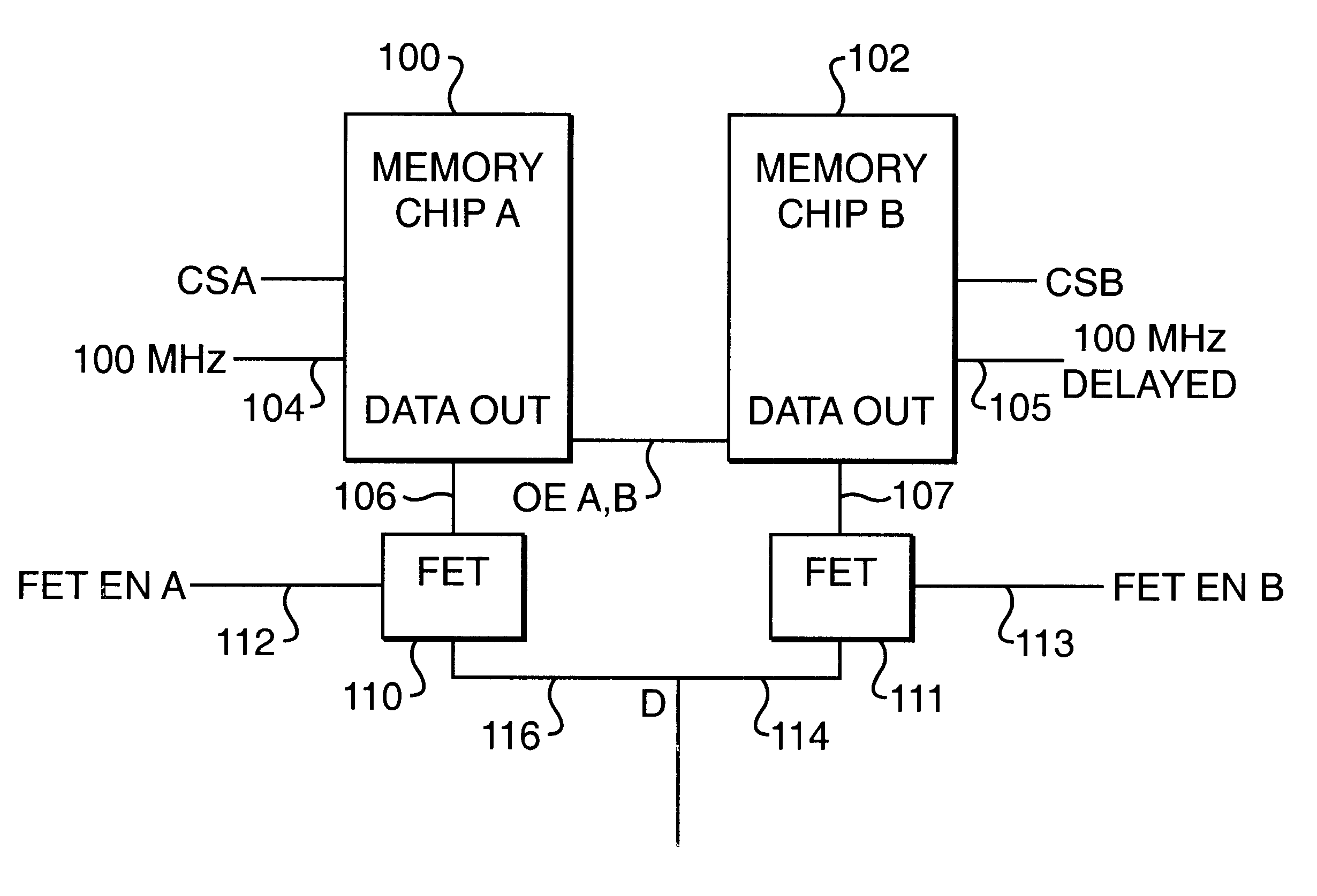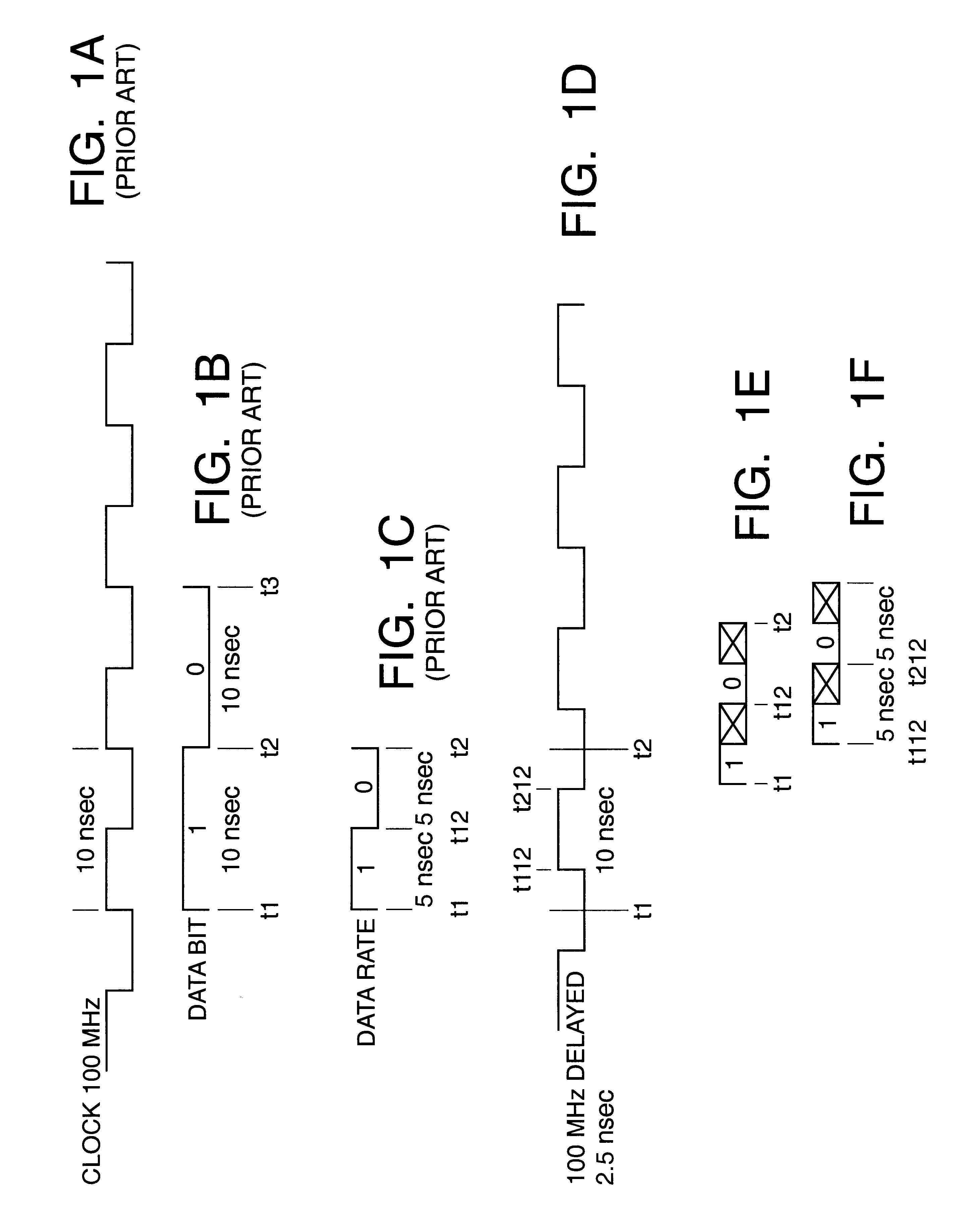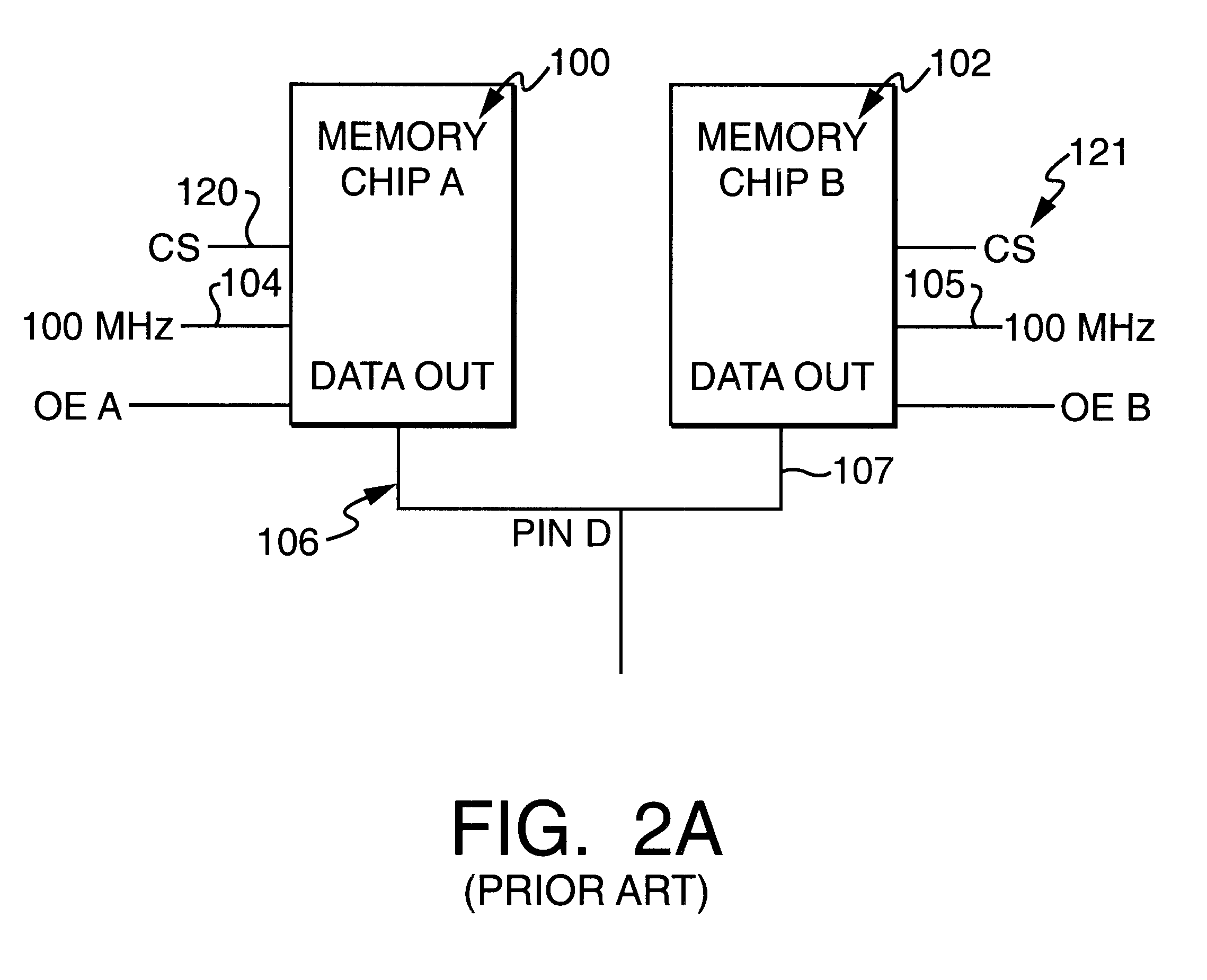Memory system using FET switches to select memory banks
a memory system and switch technology, applied in the direction of memory adressing/allocation/relocation, digital storage, instruments, etc., can solve the problems of increasing the delay in the circuit path, increasing the difficulty of silicon implementation of high speed and high density, and in some cases, prohibitiv
- Summary
- Abstract
- Description
- Claims
- Application Information
AI Technical Summary
Benefits of technology
Problems solved by technology
Method used
Image
Examples
embodiment
WITHOUT PHASE DELAYED CLOCK
In a final preferred embodiment, memory banks A and B are both DDR memories. The same basic clock signal is used to synchronize both memory bank A and memory bank B.
At the beginning of each cycle, memory bank A produces a first internal output which is valid for a duration p / 4 of the basic clock cycle, and a second internal output at p / 2 after the beginning of the cycle, again lasting for a duration p / 4. Memory bank B produces a third internal output, beginning at p / 4 after the beginning of the cycle. which is valid for a duration p / 4 of the basic clock cycle, and a fourth internal output, again at 3p / 4 after the beginning of the cycle, again lasting for a duration p / 4.
Before outputting these internal outputs onto the data bus, the first and second internal outputs are exchanged, and the third and fourth internal outputs are exchanged. As a result, the data on the data bus will contain the data bits from memory chip A during the first half of the clock per...
PUM
 Login to View More
Login to View More Abstract
Description
Claims
Application Information
 Login to View More
Login to View More - R&D
- Intellectual Property
- Life Sciences
- Materials
- Tech Scout
- Unparalleled Data Quality
- Higher Quality Content
- 60% Fewer Hallucinations
Browse by: Latest US Patents, China's latest patents, Technical Efficacy Thesaurus, Application Domain, Technology Topic, Popular Technical Reports.
© 2025 PatSnap. All rights reserved.Legal|Privacy policy|Modern Slavery Act Transparency Statement|Sitemap|About US| Contact US: help@patsnap.com



